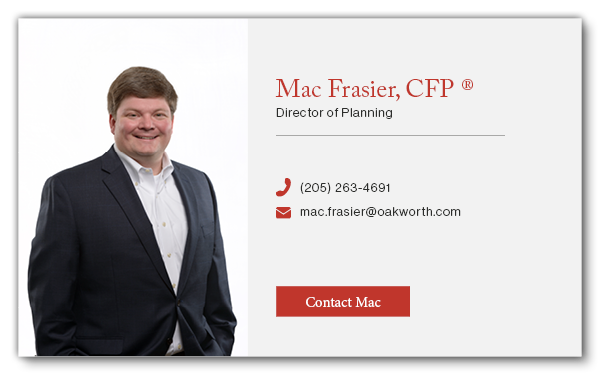When it comes to creating your financial roadmap, there are four cornerstones that you should keep in mind.
The Four Cornerstones are as follows:
- Cash Management
- Savings/Investments
- Risk Management
- Estate Planning
Last week we looked at cash management. Now that you have spent some time reviewing cash flow and determined how much you can save, let’s look at investments.
Where to Save?
There are many different options when it comes to saving for the future, and it would be impossible for me to cover them all in-depth in a single blog post. Instead, I will focus on a couple of the more common options and how to utilize them. Each of these options comes with its own advantages and disadvantages; therefore, most people’s investment strategy will consist of a variety of these savings vehicles.
Employer Sponsored Retirement Plans (401k, 403b, 457 Plan, Simple IRA)* – Even though the names are different, these options have a lot of features in common:
- All are sponsored by an employer.
- Employee and employer contributions are limited (subject to change annually).
- Employers typically provide a match for employees who contribute.
- Earnings grow tax deferred (no taxes until withdrawals are made from the account).
While there are numerous advantages to these types of retirement plans, I must point out that there is a 10% early withdrawal penalty before age 59½ with few exceptions.
Self-Employed Retirement Plans (SEP, Solo 401k, Defined Benefit Plan) * – For people who are self-employed, there are a couple of options to consider when it comes to a retirement plan. Each of these options has its own set of advantages and disadvantages. Before deciding on a plan, it would be wise to speak with your tax preparer and financial advisor to determine which option is the best fit.
IRA/Roth IRAs* – Anyone with earned income (or who has a spouse with earned income) may contribute to a Traditional IRA. However, contributions are limited to $7,000/person ($8,000 if older than age 50) in 2022. The deductibility of these contributions is also impacted by your income and other retirement plans you are eligible to contribute to. Roth IRAs also have earnings limits in addition to the contribution limits. To learn more about IRA/Roth IRA limits, visit: IRA Contribution Limits for 2024.
Traditional versus Roth – You may have the choice between marking Traditional contributions or Roth contributions. The main difference between these options when you get the tax break. Contributions to a Traditional IRA / 401k / 403b may be deductible but withdrawals are taxable. For Roth IRA / 401k / 403b you receive no upfront tax deductions but withdrawals are tax free. To learn more about the benefits of a Roth Accounts (401k, 403b) please read How is a Roth IRA different from a regular IRA?
529s – 529 Plans are tax-advantaged vehicles designed to promote education savings for a designated beneficiary. Funds inside a 529 Plan grow tax free, and distributions are not taxed federally when used to pay for qualified education expenses. To learn more about 529 Plans please read Education Savings 101.
Health Savings Account (HSA)* – These accounts are a type of personal savings account set up to pay certain healthcare costs. To contribute to an HSA, you must be a participant in a High Deductible Health Plan (HDHP). A unique advantage of HSA accounts is the fact that contributions are tax deductible; grow tax deferred; and if they are used for qualified purposes, withdrawals are tax free.
Taxable Investment Account – These accounts allow you to buy and sell investments like stocks, mutual funds, exchange-traded funds (ETFs) and bonds. There is no restriction on how much you can contribute to these accounts; how long you must hold the investments; or even how the funds are used. Taxation on these accounts is different from the previous options listed. Instead of enjoying tax-deferred status with this account, you will pay either short- or long-term capital gains taxes. Short-term capital gains tax will be applied for any gains on investments held for less than one year and are the rate is the same as your ordinary income tax rate. Long-term capital gains, which range from 0% to 20% (depending on your tax bracket), apply to investments held for over one year. Taxable investment accounts also allow investors to deduct capital losses of up to $3,000 in a tax year or utilize tax loss harvesting.
*Please note that these account types are subject to annual contribution limits. These limits are subject to change.
How Much to Save?
Last week I mentioned the 50/30/20 Rule, with 20% referring to how much a person should save. While this is a good starting place, how much you need to save is dependent on numerous factors.
- What are my goals? (timeframe and how much)
- For example, someone wanting to retire at age 50 with $200,000 in investment income will need to save more than someone aiming to retire at age 65 with $150,000 in investment income.
- Investment risk tolerance
- For example, a person who only wants to use savings accounts will need to save more than someone who is willing to invest in a diversified portfolio of stocks and bonds.
- Other income sources (pensions, Social Security, rental income, etc.)
- For example, a person with several rental properties providing regular income may not need to save as much as a person who will need to rely solely on their investments during retirement.
- Free cash available for savings
- For example, a person may not have the ability to save 20% of their income for a variety of reasons. They may start first by saving what they can.
As you can see, there isn’t a simple answer to this question. This is where working with a financial planner to determine your actual savings strategy can be a tremendous benefit.
How to Invest (Asset Allocation)?
Just like the previous question, this one doesn’t have a simple answer. You may have heard people say that the percentage of bonds in your portfolio should equal your age. This really oversimplifies asset allocation and doesn’t consider the risk tolerance of each investor. Oakworth’s Chief Economist John Norris did a great job addressing this in a previous blog post: What does the term asset allocation mean? What should mine look like?
Guided Planning Solutions
Oakworth’s Guided Planning Solutions (GPS) can help identify some of the answers to these questions. To learn more about our process or download a sample of our plan, visit to our Guided Planning Solutions page.

Thank you for your time this week. I hope you found this blog informative. Next week, join me as I discuss Risk Management. In the meantime, should you have any questions, please feel free to reach out to your Oakworth Client Advisor.
This document is being provided for informational and educational purposes and is not meant to be taken as specific advice. Oakworth Capital Bank does not provide tax or legal advice. All decisions regarding the tax and/or legal implications of these strategies should be discussed with your tax and/or legal advisors before being implemented.

This document is being provided for informational and educational purposes and is not meant to be taken as specific advice. Oakworth Capital Bank does not provide tax or legal advice. All decisions regarding the tax and/or legal implications of these strategies should be discussed with your tax and/or legal advisors before being implemented.



